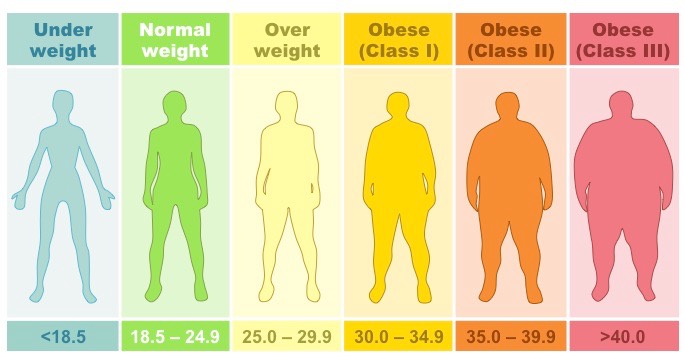![]()
Skill:
• Determination of body mass index by calculation or use of a nomogram
The body mass index (BMI) provides a measure of relative mass based on the weight and height of the individual
- It is commonly used as a screening tool to identify potential weight problems in sedentary adults
Body mass index can be calculated according to the following formula:

BMI ranges from underweight to obese, according to predetermined values based on an average adult population
- BMI values are not a valid indicator for pregnant women or professional athletes with atypical muscle / fat ratios
- BMI calculations should not be used as a diagnostic tool and should be used in conjunction with other measurements
Standard Adult BMI Categories

Nomograms
An alternative way of calculating body mass index is by using an alignment chart (nomogram)
- Nomograms display height and weight on perpendicular axes and then assign BMI values to colour coded regions
BMI Nomogram for Typical Adult

